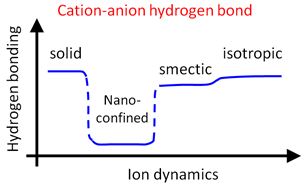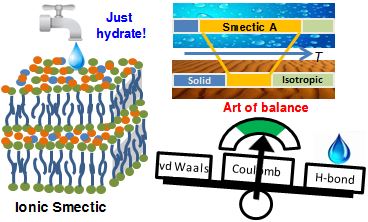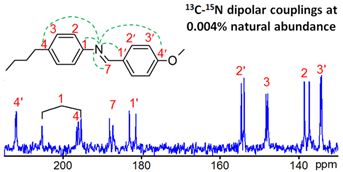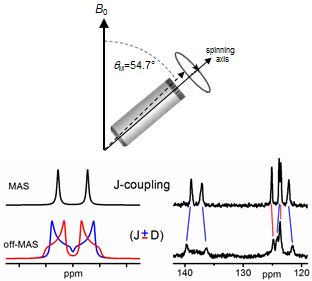Sergey Dvinskikh
Professor
Details
Researcher
About me
Professor in Physical Chemistry, Deputy head of Applied Physical Chemistry division. Docent 2009, PhD in Physics from St Petersburg University, 1990. Post-doctoral fellow at Free University of Berlin, visiting researcher at University of Michigan, researcher at Stockholm university.
Research Interests
The unifying theme in my research is the development and application of NMR technique to study the behaviour of molecules and ions in self-assembling soft matter. The research is motivated by the need to understand at a molecular level the properties and functions of technologically important materials and biological systems. I was broadly interested in liquid crystals, biomembranes, nanostructured and nanoporous organic-inorganic composites, polymers, ionic soft matter. A common molecular feature in these diverse materials is that anisotropic molecular/ion dynamics and local orientational ordering have a crucial influence on system properties that govern material functionality or device performance.
Full list of publications at Google Scholar
Recent projects
Molecular order and dynamics in ionic liquid crystals
Ionic liquid crystals uniquely combine the ionic conductivity of ionic liquids with the anisotropic physical and chemical properties of liquid crystals. Such a combination makes them highly demanded materials for applications in nanotechnology, electrochemistry, and biomedicine. Phase stabilization in ionic liquid crystals is determined by a subtle balance between hydrogen bonding, electrostatic interactions, and dispersion forces. Tuning intermolecular forces provides a strategy for controlling properties important for technological applications of ionic liquid crystals.
Selected publications:
D. Majhi, J. Dai, S. V. Dvinskikh. Insights into cation-anion hydrogen bonding in mesogenic ionic liquids: an NMR study. Phys. Chem. Chem. Phys., (2022). https://doi.org/10.1039/D2CP03188D
|
Solid-State NMR reveals hydrogen bonding strength in mesogenic ionic liquids for different dynamic states of ions ranging from high reorientational and translational freedom to partial orientation and positional order to partial or full immobilization. |
 |
D. Majhi, S. V. Dvinskikh. Ion conformation and orientational order in a dicationic ionic liquid crystal studied by solid-state nuclear magnetic resonance spectroscopy.Sci. Rep.,11, 5985 (2021)
In ionic liquid crystals, electrostatic and hydrogen bonding interactions in ionic sublayer and van der Waals interaction in hydrophobic domains are the main forces contributing to the mesophase stabilization and determining the molecular orientational order and conformation. How these properties in dicationic materials are compared to those in conventional monocationic analogues? We address this question using a combination of advanced NMR methods and DFT analysis.
D. Majhi, J. Dai, A. V. Komolkin, S. V. Dvinskikh. Understanding ionic mesophase stabilization by hydration: a solid-state NMR study.Phys. Chem. Chem. Phys.,20, 13408-13417 (2020).
|
The mechanism of mesophase stability in ionic liquid crystals is currently a highly debated topic. The contribution of water hydrogen bonding to overall interaction energy shifts the delicate balance between different intermolecular forces responsible for mesophase formation. |
 |
Development of NMR methodology in soft matter
Progress of experimental science depends on the development of new techniques and instrumentations to allow measurements that had not previously been possible. An extremely versatile NMR technique involves the measurement of anisotropic spin couplings which are highly sensitive to motion at a molecular level.
Selected publications:
L. Jackalin, B. B. Kharkov, A. V. Komolkin, S. V. Dvinskikh. Experimental strategies for 13C–15N dipolar NMR spectroscopy in liquid crystals at the natural isotopic abundance.Phys. Chem. Chem. Phys.,20, 22187-22196 (2018)
|
Measuring dipolar couplings of rare spins brings a new dimension to dipolar NMR spectroscopy of soft matter. A star-like network of structural constraints obtained in this technique delivers information not available from conventional block-wise networks obtained by other dipolar NMR methods. |
 |
D. Majhi, B. Kharkov, S. V. Dvinskikh. Sign Determination of Dipolar Couplings in Liquid Crystals by off-Magic-Angle Sample Spinning.Chem. Phys. Lett.781, 138997 (2021)
|
While magnitudes of dipolar couplings can be determined from spectral splittings, signs of the constants are unavailable. Sign information can be obtained from NMR spectra in samples spinning at an angle slightly mis-set from the magic angleθm= 54.7º. The approach is used to develop an experimental strategy for sign-sensitive measurements of heteronuclear dipolar couplings in anisotropic soft materials to facilitate the determination of structural and dynamic parameters. |
 |
Courses
Degree Project in Chemistry, Second Cycle (KD200X), examiner
Molecular Structure (KD1070), teacher
Project in Chemistry (KD2905), examiner
Project in Chemistry (KD2910), examiner
Project in Chemistry (KD2920), examiner
Solid State Chemistry: Structures and Methods (KD2155), examiner, course responsible